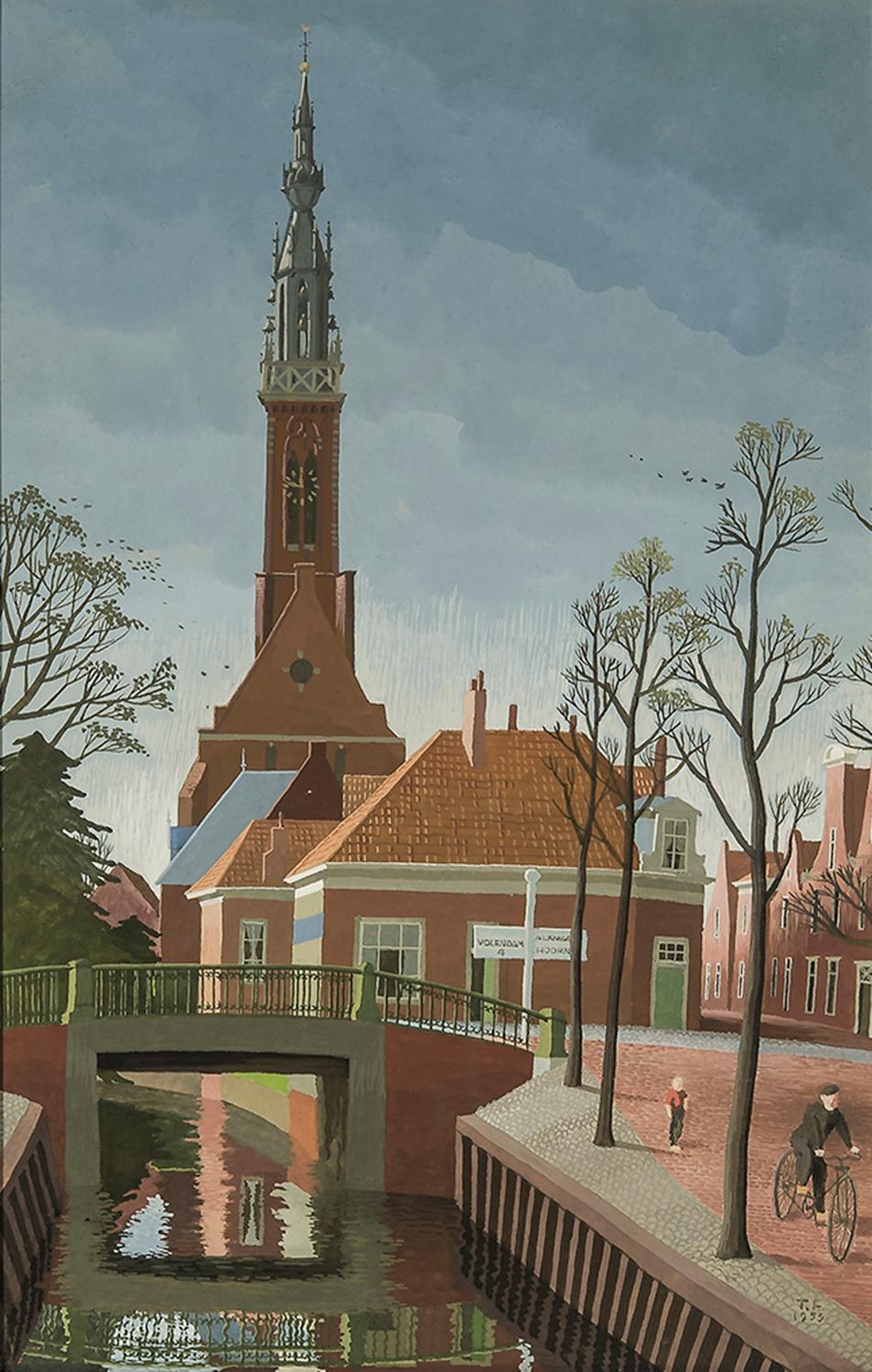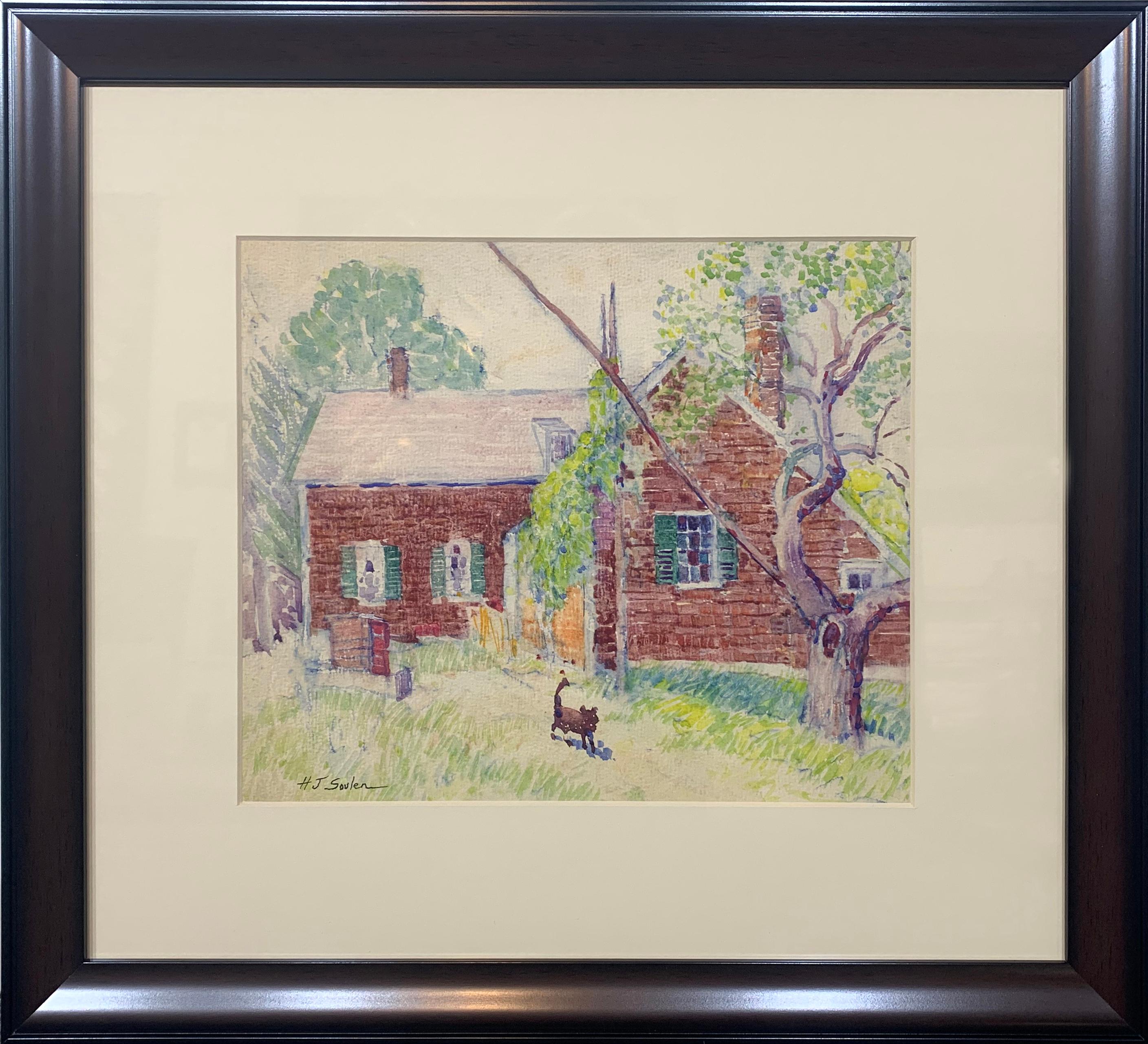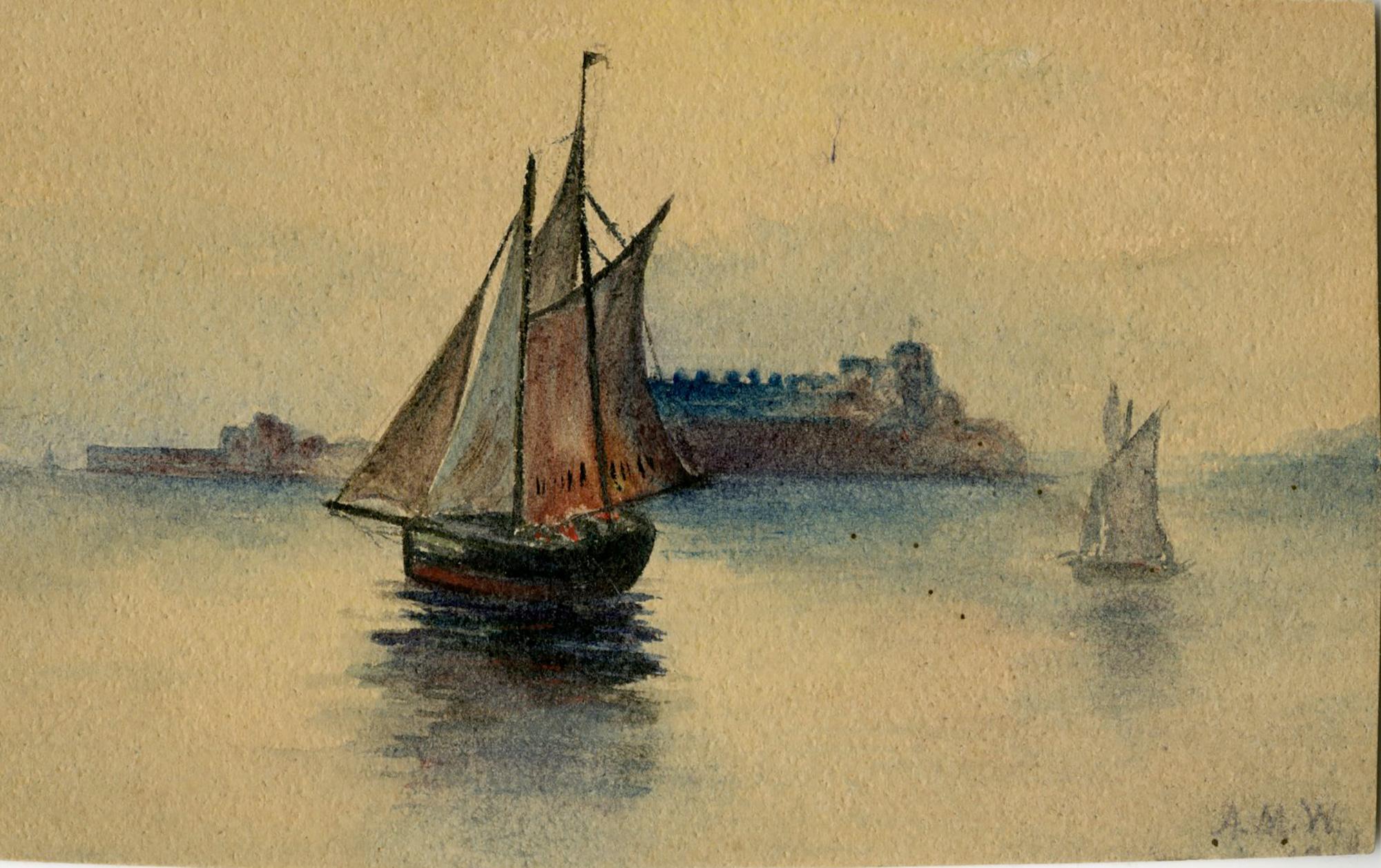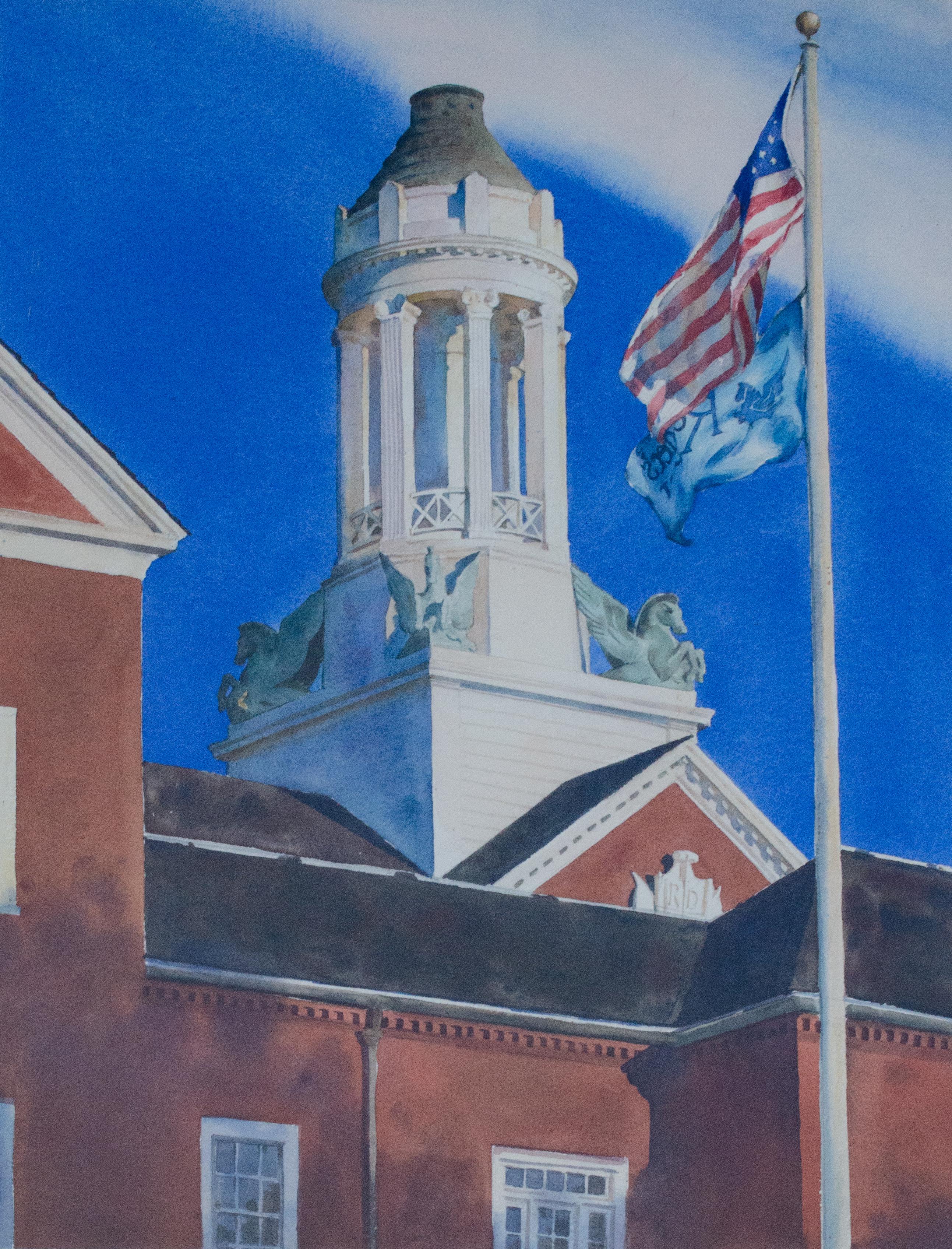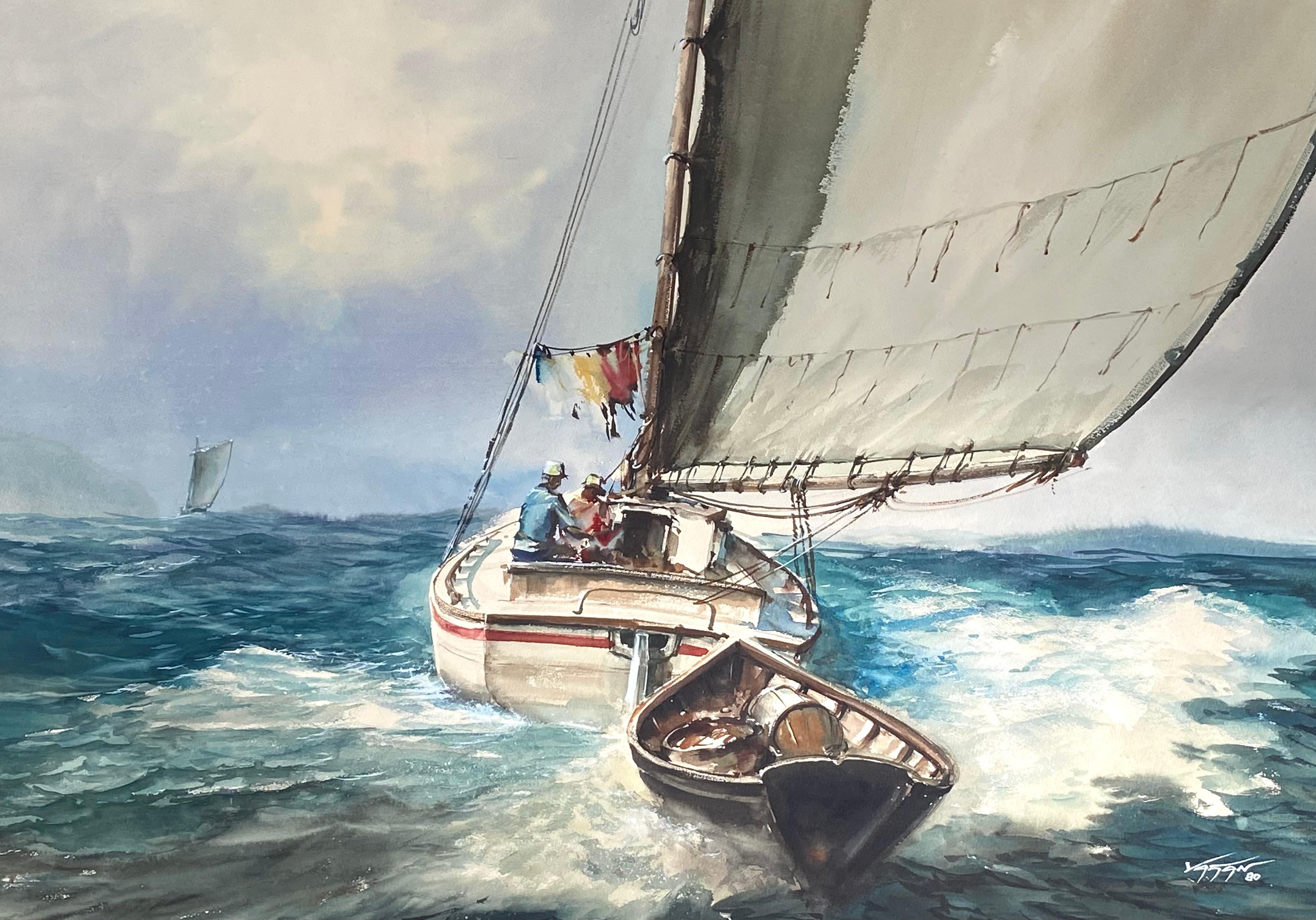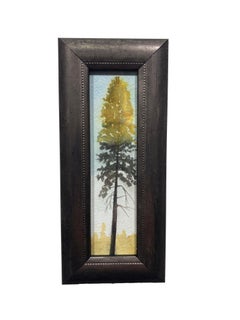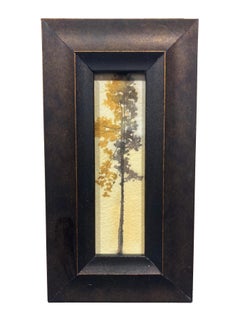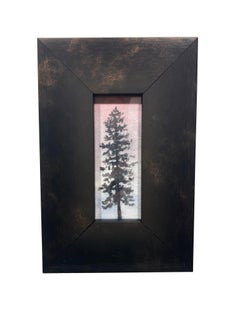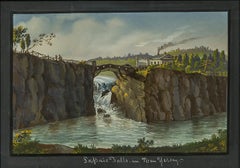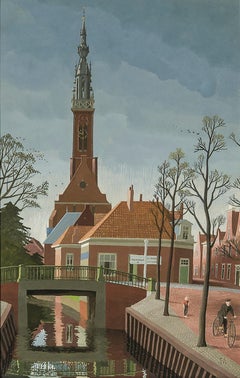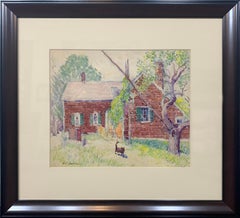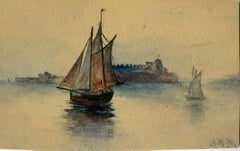Items Similar to Wildflower
Want more images or videos?
Request additional images or videos from the seller
1 of 2
Russ HavardWildflower2025
2025
About the Item
Represented by George Billis Gallery, NYC & LA --RUSS HAVARD
Artist Statement
I'm drawn towards nature imagery that depicts isolated elements in their continual struggle to flourish under desolate circumstances. The seemingly bleak, the empty landscape, speaks to me. It is in this silence that I see the never-ending waves of struggle, wearing down, and rebirth emerging.
The process of endless building and reconfiguring transcends the mere physical and encompasses the spiritual and symbolic. The scars and flowers of experience against a backdrop of an endless sea of days transform into a tiny glimpse of what Heaven might be. In what some see as mere desolation, I find a spark of the sublime: a release into a quiet revelry, and a peace that covers it all. The unique frames are sometimes recycled end cuts or uniquely marked by the artist.
By making paintings and constructions, I take part in a restoration process. It is an act of reclamation and pressing onward.
- Creator:
- Creation Year:2025
- Dimensions:Height: 13.5 in (34.29 cm)Width: 6.5 in (16.51 cm)
- Medium:
- Movement & Style:
- Period:
- Condition:
- Gallery Location:Fairfield, CT
- Reference Number:1stDibs: LU183216159062
About the Seller
5.0
Vetted Professional Seller
Every seller passes strict standards for authenticity and reliability
Established in 1996
1stDibs seller since 2015
250 sales on 1stDibs
Typical response time: 8 hours
- ShippingRetrieving quote...Shipping from: Fairfield, CT
- Return Policy
Authenticity Guarantee
In the unlikely event there’s an issue with an item’s authenticity, contact us within 1 year for a full refund. DetailsMoney-Back Guarantee
If your item is not as described, is damaged in transit, or does not arrive, contact us within 7 days for a full refund. Details24-Hour Cancellation
You have a 24-hour grace period in which to reconsider your purchase, with no questions asked.Vetted Professional Sellers
Our world-class sellers must adhere to strict standards for service and quality, maintaining the integrity of our listings.Price-Match Guarantee
If you find that a seller listed the same item for a lower price elsewhere, we’ll match it.Trusted Global Delivery
Our best-in-class carrier network provides specialized shipping options worldwide, including custom delivery.More From This Seller
View All151
By Russ Havard
Located in Fairfield, CT
Represented by George Billis Gallery, NYC & LA --RUSS HAVARD
Artist Statement
I'm drawn towards nature imagery that depicts isolated elements in their continual struggle to flourish ...
Category
21st Century and Contemporary American Realist Landscape Drawings and Wa...
Materials
Paper, Watercolor
146
By Russ Havard
Located in Fairfield, CT
Represented by George Billis Gallery, NYC & LA --RUSS HAVARD
Artist Statement
I'm drawn towards nature imagery that depicts isolated elements in their continual struggle to flourish ...
Category
21st Century and Contemporary American Realist Landscape Drawings and Wa...
Materials
Paper, Watercolor
159
By Russ Havard
Located in Fairfield, CT
Represented by George Billis Gallery, NYC & LA --RUSS HAVARD
Artist Statement
I'm drawn towards nature imagery that depicts isolated elements in their continual struggle to flourish ...
Category
21st Century and Contemporary American Realist Landscape Drawings and Wa...
Materials
Paper, Watercolor
155
By Russ Havard
Located in Fairfield, CT
Represented by George Billis Gallery, NYC & LA --RUSS HAVARD
Artist Statement
I'm drawn towards nature imagery that depicts isolated elements in their continual struggle to flourish ...
Category
21st Century and Contemporary American Realist Landscape Drawings and Wa...
Materials
Paper, Watercolor
144
By Russ Havard
Located in Fairfield, CT
Represented by George Billis Gallery, NYC & LA --RUSS HAVARD
Artist Statement
I'm drawn towards nature imagery that depicts isolated elements in their continual struggle to flourish ...
Category
21st Century and Contemporary American Realist Landscape Drawings and Wa...
Materials
Paper, Watercolor
145
By Russ Havard
Located in Fairfield, CT
Represented by George Billis Gallery, NYC & LA --RUSS HAVARD
Artist Statement
I'm drawn towards nature imagery that depicts isolated elements in their continual struggle to flourish ...
Category
21st Century and Contemporary American Realist Landscape Drawings and Wa...
Materials
Paper, Watercolor
You May Also Like
Passaic Falls in New Jersey
By Nicolino V. Calyo
Located in New York, NY
Nicolino Calyo's career reflects a restless spirit of enterprise and adventure. Descended in the line of the Viscontes di Calyo of Calabria, the artist was the son of a Neapolitan army officer. (For a brief biographical sketch of the artist see Philadelphia Museum of Art, Pennsylvania, Philadelphia: Three Centuries of American Art, exhib. cat. [1976], pp. 299-301 no. 257.) Calyo received formal training in art at the Naples Academy. His career took shape amidst the backdrop of the political turbulence of early nineteenth-century Italy, Spain, and France. He fled Naples after choosing the losing side in struggles of 1820-21, and, by 1829, was part of a community of Italian exiles in Malta. This was the keynote of a peripatetic life that saw the artist travel through Europe, to America, to Europe again, and back to America.
Paradoxically, Calyo’s stock-in-trade was close observation of people and places, meticulously rendered in the precise topographical tradition of his fellow countrymen, the eighteenth-century
vedute painters Antonio Canale (called Canaletto) and Francesco Guardi. In search of artistic opportunity and in pursuit of a living, Calyo left Malta, and, by 1834, was in Baltimore, Maryland. He advertised his skills in the April 16, 1835 edition of the Baltimore American, offering "remarkable views executed from drawings taken on the spot by himself, . . . in which no pains or any resource of his art has been neglected, to render them accurate in every particular" (as quoted in The Art Gallery and The Gallery of the School of Architecture, University of Maryland, College Park, 350 Years of Art & Architecture in Maryland, exhib. cat. [1984], p. 35). Favoring gouache on paper as his medium, Calyo rendered faithful visual images of familiar locales executed with a degree of skill and polish that was second nature for European academically-trained artists. Indeed, it was the search for this graceful fluency that made American artists eager to travel to Europe and that led American patrons to seek out the works of ambitious newcomers.
On June 16, 1835, the Baltimore Republican reported that Calyo was on his way north to Philadelphia and New York to paint views of those cities. Calyo arrived in New York, by way of Philadelphia, just in time for the great fire of December 1835, which destroyed much of the downtown business district. He sketched the fire as it burned, producing a series of gouaches that combined his sophisticated European painting style with the truth and urgency of on-the-spot observation. Two of his images were given broad currency when William James Bennett reproduced them in aquatint. The New-York Historical Society owns two large Calyo gouaches of the fire, and two others, formerly in the Middendorf Collection, are now in the collection of Hirschl & Adler Galleries. From 1838 until 1855, Calyo listed himself variously in the New York City directories as a painter, a portrait painter, and as an art instructor, singly, and in partnership with his sons, John (1818-1893) and later, the younger Hannibal (1835-1883). Calyo also attracted notice for a series of scenes and characters from the streets of New York, called Cries of New York. These works, which were later published as prints, participate in a time-honored European genre tradition. Calyo’s New York home became a gathering place for European exiles, including Napoleon III. Between 1847 and 1852 Calyo exhibited scenes from the Mexican War and traveled from Boston to New Orleans with his forty-foot panorama of the Connecticut River. Later, he spent time in Spain as court painter to Queen Maria Christina, the result of his continuing European connections, but he was back in America by 1874, where he remained until his death.
The Passaic River rises in the hills just south of Morristown, New Jersey, marking a serpentine eighty-mile course before it empties into Newark Bay. It flows north-northeast to Paterson, where it falls seventy feet in a spectacular cataract before continuing south through Passaic and Newark. William Gerdts, in Painting and Sculpture in New Jersey (1964, pp. 51-2), describes the falls as:
the most important [landscape] subject in New Jersey during the eighteenth and nineteenth centuries. . . . The Passaic Falls remained a popular spot, particularly during the romantic period. Indeed, newspapers, periodicals, and gift books contain many accounts of visits to the Falls, sentimental poems written about them or about a loved one visiting the Falls, or even, occasionally, in memory of one who perished in the waters of the Falls — usually intentionally. . . . Waterfalls . . . were popular among travelers in the period and the Passaic Falls were only surpassed by Niagara Falls and Trenton Falls...
Category
19th Century American Realist Landscape Drawings and Watercolors
Materials
Gouache, Paper
Edam, Holland
By Thomas Fransioli
Located in New York, NY
Thomas Fransioli’s cityscapes are crisp and tidy. Buildings stand in bold outline, their forms squarely defined by stark light and long shadows. Saturated color permeates every corner of his canvases, from vibrant oranges and greens to smoky terra cottas and granites. Even the trees that line Fransioli’s streets, parks, and squares are sharp and angular, exactly like those in an architect’s elevation rendering. But Fransioli’s cities often lack one critical feature: people. His streets are largely deserted, save for parked cars and an occasional black cat scurrying across the pavement. People make rare appearances in Fransioli’s compositions, and never does the entropy of a crowd overwhelm their prevailing sense of order and precision. People are implied in a Fransioli painting, but their physical presence would detract from the scene’s bleak and surreal beauty.
Magic Realism neatly characterizes Fransioli’s artistic viewpoint. The term was first broadly applied to contemporary American art in the 1943 Museum of Modern Art exhibition, American Realists and Magic Realists. As exhibition curator Dorothy Miller noted in her foreword to the catalogue, Magic Realism was a “widespread but not yet generally recognized trend in contemporary American art…. It is limited, in the main, to pictures of sharp focus and precise representation, whether the subject has been observed in the outer world—realism, or contrived by the imagination—magic realism.” In his introductory essay, Lincoln Kirstein took the concept a step further: “Magic realists try to convince us that extraordinary things are possible simply by painting them as if they existed.”
This is Fransioli, in a nutshell. His cityscapes exist in time and space, but certainly not in the manner in which he portrays them.
Fransioli—and other Magic Realists of his time—was also the heir to Precisionism, spawned from Cubism and Futurism after the Great War and popularized in the 1920s and early 1930s. While Fransioli may not have aspired to celebrate the Machine Age, heavy industry, and skyscrapers in the same manner as Charles Sheeler, his compositions tap into the same rigid gridwork of the urban landscape that was first codified by the Precisionists.
During the 1950s, Fransioli was represented by the progressive Margaret Brown...
Category
20th Century American Realist Landscape Drawings and Watercolors
Materials
Gouache, Paper
Country Farmhouse with Dog, Watercolor on Paper, Landscape, Original Art
By Henry Soulen
Located in Doylestown, PA
"Country Farmhouse" is a 9 x 10.5 inches, watercolor on paper painting by American illustrator, Henry James Soulen. The landscape is signed "H J Soulen" in the lower left, it is newl...
Category
Mid-20th Century American Realist Landscape Drawings and Watercolors
Materials
Watercolor, Archival Paper
Schooners along the Hudson, West Point Academy in the distance.
Located in Middletown, NY
A serene Hudson River scene by a student of Louis Comfort Tiffany.
Anna May Walling was born in 1881, a native of Goshen, New York. She was a graduate of the Blair Academy, and Prat...
Category
Early 20th Century American Realist Landscape Drawings and Watercolors
Materials
Watercolor, Handmade Paper
David Dewey Watercolor of Reader's Digest Headquarters
By David Dewey
Located in New York, NY
David Dewey (B. 1946)
Reader's Digest Headquarters, 1996
Watercolor on paper
Sight: 24 x 18 1/2 in.
Framed: 36 x 29 3/4 x 1 in.
Living on the Maine coast, David Dewey is a watercolo...
Category
1990s American Realist Landscape Drawings and Watercolors
Materials
Paper, Watercolor
“Work Day”
Located in Southampton, NY
Original watercolor on archival paper of a sailboat with a trailing dory heading out to sea. Attributed to the hand of Alexander Yaron. Signed lower right and dated 1980. Condition is excellent. Under glass. The artwork is matted and housed in a rounded front edge solid oak wood frame. Overall framed measurements are 27 by 34 inches. Provenance: A Sarasota, Florida gentleman.
Alexander A. Yaron was born in Estonia in 1910, lived in China and the Philippines before moving to the United States in the 1950’s. He lived in New York as well as in Anaheim, California where he has a working studio. An autodidact and a versatile commercial artist, Alexander Yaron applied his talent in portraiture, photography, interior design, advertising, layout and illustration. His best known projects were illustrated art...
Category
1980s American Realist Landscape Drawings and Watercolors
Materials
Watercolor, Archival Paper
$1,480 Sale Price
20% Off

